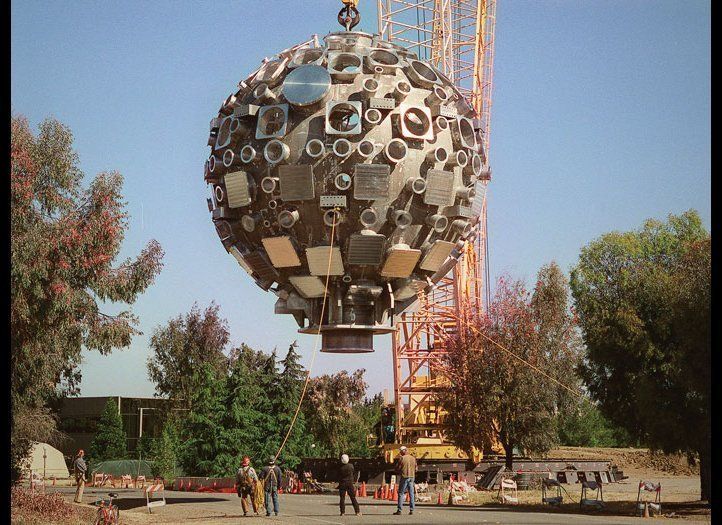The world’s largest laser, a machine that appeared in a Star Trek movie, has attained a powerful result: It's squeezed diamond, the least compressible substance known, 50 million times harder than Earth's atmosphere presses down on us. The finding should help scientists better understand how material behaves at the great pressures that prevail deep inside giant planets.
Physicist Ray Smith of the Lawrence Livermore National Laboratory in Livermore, California, and his colleagues achieved the feat at the National Ignition Facility (NIF), also in Livermore. Spanning 10 meters and armed with scores of lasers, the instrument is so sci-fi–looking that it appeared as the "warp core" of the starship Enterprise in the 2013 movie Star Trek Into Darkness. NIF has a practical purpose, however: to trigger nuclear fusion, the same type of reaction that powers the sun, in the hope of someday solving our energy needs. Scientists also use it for basic research, such as investigating how various materials respond when compressed—data relevant to the interiors of planets.
In the new study, Smith's team fired 176 lasers at a small gold cylinder measuring 1.1 centimeters long and 0.6 centimeters in diameter. The lasers heated the gold so that it emitted x-rays, which squeezed a tiny diamond attached over a hole in the cylinder's outer wall. The diamond reached a pressure of 50 million atmospheres—14 times greater than the pressure at Earth's center.
As the researchers report online yesterday (July 17) in Nature, the x-ray assault nearly quadrupled the diamond's density. "That's a record," Smith says. "No one's compressed diamond to that extent before." The blast pulverized the diamond into dust, but before the mineral's destruction the scientists successfully measured its density as the pressure rose. For a billionth of a second, the diamond, which is normally 3.25 times denser than water, became denser than lead and 12.03 times denser than water.
"This is an impressive accomplishment," says David Stevenson of the California Institute of Technology in Pasadena, a planetary scientist who was not involved in the experiment. "This is high-quality data at very high pressures." Such great pressure is comparable to that at the center of giant planets: Jupiter's core has a pressure between 40 million and 90 million atmospheres, while the pressure at Saturn's center is about 40 million atmospheres.
Neither world has a diamond core, however. Diamond consists of carbon, and in our solar system oxygen is twice as common and makes up silicate rocks, a major component of the sun's planets. Still, scientists have speculated that diamond worlds may exist elsewhere. If a solar system arises with more carbon than oxygen, then carbon should soak up the oxygen by forming carbon monoxide, leaving excess carbon to create carbon planets—which, under pressure, become diamond worlds. Thus, Smith says, the new experiment will probe the nature of such planets.
Astronomer Jonathan Fortney of the University of California, Santa Cruz, thinks carbon planets are rare, however, so he hopes the scientists investigate other materials. One element he mentions is iron, which may make up the cores of super-Earths—planets several times more massive than our own. Smith says his team is now studying this material and hopes to have results soon.
This story has been provided by AAAS, the non-profit science society, and its international journal, Science.
